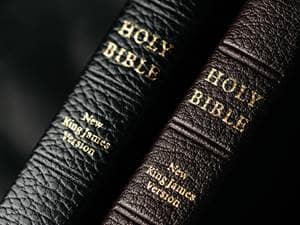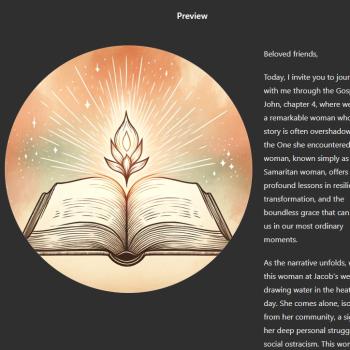
The word "Bible" usually used in reference to the sacred scriptures of Jewish and Christian traditions, actually simply means "little books." The Bible is comprised of a series of smaller books. To ask, then, about a Hindu "Bible" is really to ask about Hinduism's sacred texts. In this sense, Hinduism has many sacred texts that shape their theological, spiritual, and communal lives. It does not, however, have a single book that has religious or devotional authority.
Hindu scriptures are an extensive collection of religious writings whose authorship and dates are largely unknown. They originated in oral traditions over millennia and were recorded gradually over the years. The mythology is vast and widely diverse, with often conflicting stories about the gods and goddesses, the creation of the world, and the ways humans should respond to the deities. The texts include creation myths, laws, poetry, histories, philosophy, rituals, divine-human interactions and conversations, and a wide variety of sectarian texts that treat local lore.
Hindu scholars recognize two essential categories of religious texts within this extensive collection. The first category is called Shruti, which means "revealed." The Shruti include the Vedas, the Brahmanas, and the Upanishads. The second category is called Smrti, which means "remembered." This category includes everything that is not in Shruti, usually comprised of multiple myths, epic tales, and local traditions. Different schools of Hinduism align themselves with different select texts.
The Vedas are the oldest category of texts and are considered by most Hindus to be the foundational authority of Hinduism. The Vedas are written in Sanskrit, and can be dated to the second millennium B.C. The Vedas have four sections: the Rig Veda, Yajur Veda, Sama Veda, and Atharva Veda. Together, these comprise more than 1,000 songs of praise to the gods. They include intricate instructions on how to offer sacrifice to the gods. Many of the myths that are central to all of Hinduism are found in the Vedas. The Vedas mainly focus on the hymns and formulas priests should chant and recite in worship. The last section, the Atharva Veda, includes stories, spells, and charms.
Each of the four sections in the Vedas also have four subsections that break out the material. The first division is called the Samhita, which contains the original Vedic text itself. Interpretations and commentaries on the text follow in the next three subsections, called the Brahmanas, the Aranyakas, and the Upanishads.
The Upanishads have a special status, even though they are included in Vedic literature. While there are over one hundred Upanishads written in different periods in history, the principal ones were recorded sometime between 800-100 B.C. Though they are part of the Vedas, they actually upend a great deal of the Vedic emphases. Instead of attempting to placate the multiple gods and goddesses of the Vedas, the Upanishads focus on the singular, abstract divine reality, the Brahman. The Upanishads move Hinduism toward an inner devotion, called bhakti, one dedicated to the uncovering of illusions, the detachment from unreality, and the recognition that the self is in truth Brahman.
The Smrti include many of the most well-known epic tales, including the Mahabharata and the Ramayana, and a diverse collection of texts called the Puranas. The Puranas tell layered stories of theology, history, and mythology, and the singular stories of specific gods or goddesses are often found in this body of material. The Mahabharata, which is a vast and complex tale of the history of India, includes the Bhagavad Gita, which is one of the most popular and beloved Hindu texts. The Gita attempts to reconcile the priestly work of the Vedas with the personal devotion of the Upanishads.
The great epics told in all these texts reveal the gods interacting with humanity. The stories are multilayered, complex, and heroic, and as such, they have often been portrayed in music, art, theater, film. They have been retold in multiple contemporary iterations and have inspired countless commentaries. For instance, the Bhagavad Gita has been alluded to by such diverse people as Rudyard Kipling, Ralph Waldo Emerson, and Robert Oppenheimer. The stories serve as more than dramatic tales, however, they provide moral and ethical guidance to Hindu society and form the basis for their worldviews.
These sacred texts do not have the same weight or role as sacred texts do in western traditions. The devout Hindu does not need to be versed in the texts, and enlightenment does not come by studying the texts. The deities do not reveal themselves through the texts but through the worshipper's internal enlightenment. As enlightened beings, many religious leaders—such as gurus, swamis, rishis, acharyas, sadhus, pandits, and others—have the same authority in teaching as do the sacred texts. There are also thousands of other Hindu sacred texts and oral traditions that are just as authoritative in the lives of many Hindus.
Read more about the Vedas here.
5/14/2024 8:34:56 PM











